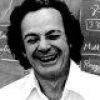 106
106Q5. The number of terms in an AP is even. The sum of the odd terms is 24 while that of the even terms is 30. If the last term exceeds the first term by 10.5 then find the number of terms.
Let there be 2n terms.
i.e. let the AP be a1, a2, a3,...,a2n
given a1+a3+...+a2n-1 = 24 .. (i)
a2+a4+...+a2n = 30 .. (ii)
a2n - a1 = 10.5 .. (iii)
from (ii) n/2(2a2+(n-1)d) = 30 => (n-1)d = 60/n - 2a2
from (i) n/2(2a1+(n-1)d) = 24 => (n-1)d = 48/n - 2a1
equating, 12/n = 2d
so, nd=6
from (iii) 2nd-d=10.5
==> 12-d=10.5
==> d=1.5 So, n=4
so no. of terms = 2n = 8
 62
62right now i dont remember what was it that i did ;) :D
It wud be shameful to admit that i used sin (a-b) = sin a - sin b
But probably that is what i did this time :D :D
 66
66:D I thought you used the correct formula but made a mistake in the sign :)
 62
62btw did you realize that i used sin (a-b) = sin a - sin b
:D
I guess i should wake up
 62
62hmm.. yes anant sir... i see the mistakes...
even for a moment i was surprised seeing zero as a soln ;)
Tx for pointing out :)
 11
11In=In-2
But kaymant sir, I spent up my time trying to get In=In-1......(in that test...)
How to understand which one to aspire for?
 66
66Infact, one can prove that
I_n=\int_0^\pi \dfrac{\sin nx}{\sin x}\ \mathrm{d}x
is equal to \pi for all odd n's and zero for all even ones.
 341
341Yeah, there was a small slip-up, a sign has been reversed. It should be
\sin (2n-1) (\pi-x) = \sin (2n-1) x
This is a constant sequence as an+1-an = 0
 66
66Nishant sir, in #6
an is NOT zero for all n. For instance, for n = 1, one gets
a_1=\int_0^\pi \dfrac{\sin x}{\sin x}\ \mathrm{d}x=\pi
 1
1Q.3)the terms are in H.P. SO,THEIR RECIPROCALS ARE IN A.P.
NOW,this a.p. has common difference = -7/12.as common difference is -ve,so this A.P. is decreasing.
so,we can put : 5/2 + (n-1)(-7/12)<0 or, n< 37/7.so,n can be 5.
now,in this a.p. t5=1/6 (use the formula)
so the term in h.p. = 6.
thus, 6 is the greatest +ve term in this progression.
 1
1in 4)bolden letters mean ratio of the product of 1st set of numbers to the 2nd set of numbers is 7/8.
take two sets:a-d,a,a+d and b-c,b,b+c.add each sets equal to 15. u get a=b=5.we have d=c+1 ....m
then a(a2-d2)/b(b2-c2)=7/8
now put equation m,
u get d=2,-16
cn solve it furthur.
 1
1Q3. The greatest positive term in the sequence 25, 1223,34,... has the value ________
Q4. Find the sum:
\frac{1}{1+x}+\frac{2}{x^2+1}+\frac{4}{x^4+1}+....+\frac{2^n}{x^{2^n}+1}
 1
16.a) total sum of divisors is :( 20+21+..........210)*(50+51+.......57)*(110+111+......118). sum of proper divisors =sum of total divisors - 210.57.118 -1 similar case in the other one also
 62
62Yes..
these are standard tricks of integration...
Once you have practiced the topic these will come to you :)
 106
106sir will these obvious things become obvious to me ever? will it when i go further into integration?
 62
62a_{n} = \int_{0}^{\pi }{\frac{sin(2n-1)\pi}{sinx}}dx - \int_{0}^{\pi }{\frac{sin(2n-1)x}{sinx}}dx
n is an integer.. hence (2n-1)Pi is a multiple fo pi.. hence its sin is zero :)
a_n=0 - \int_{0}^{\pi }{\frac{sin(2n-1)x}{sinx}}dx
The RHS is the -ve of the original integral.. hece RHS is an
Thus,
a_n=0 -a_n
Thus, a_n=0
 106
106sir, can u please xplain the last two steps? i was just luking thru thiis qn. i cudnt understand the last two of them #6
 62
62product fo the set here means product of the terms of the set
 62
62a_{n} = \int_{0}^{\pi }{\frac{sin(2n-1)x}{sinx}}dx
a_{n} = \int_{0}^{\pi }{\frac{sin(2n-1)(\pi-x)}{sin(\pi-x)}}dx
a_{n} = \int_{0}^{\pi }{\frac{sin(2n-1)\pi}{sinx}}dx - \int_{0}^{\pi }{\frac{sin(2n-1)x}{sinx}}dx
a_n=0 - \int_{0}^{\pi }{\frac{sin(2n-1)x}{sinx}}dx
Thus, a_n=0
 1
1Q4. There are two sets of numbers, each having three terms in AP and the sum of each set is 15. The common difference of the first set is greater by 1 than the common difference of the second set and the product of the first set is to the product of the second set as 7 to 8. Find the numbers.
can anyone explain what the bolded words mean?
Q5. The number of terms in an AP is even. The sum of the odd terms is 24 while that of the even terms is 30. If the last term exceeds the first term by 10.5 then find the number of terms.
Q6. Find the sum of the proper divisors of the following:
(a) 210.57.118 (b) 6a.10b.15c
 62
62Question 1
2\{tan\frac{\pi }{9} tan\frac{5\pi }{18}\}=tan\frac{\pi }{9} tan\frac{7\pi }{18} \\\Leftrightarrow tan\frac{\pi }{9} 2tan\frac{5\pi }{18}=tan\frac{7\pi }{18} \\\Leftrightarrow 2tan\frac{5\pi }{18}=tan\frac{7\pi }{18}-tan\frac{\pi }{9}
tan\frac{7\pi }{18}-tan\frac{\pi }{9} = tan (\frac{7\pi }{18}-\frac{\pi }{9})\times\{1+tan\frac{2\pi }{18}\times \frac{7\pi }{18}\}
= tan (\frac{5\pi }{18})(1+1)
Hence proved :)
 62
62Question 4
\frac{1}{1+x}+\frac{2}{x^2+1}+\frac{4}{x^4+1}+....+\frac{2^n}{x^{2^n}+1}
\frac{1}{1-x}-\frac{1}{1-x}+\frac{1}{1+x}+\frac{2}{x^2+1}+\frac{4}{x^4+1}+....+\frac{2^n}{x^{2^n}+1}
=-\frac{1}{1-x}+\frac{2}{1-x^2}+\frac{2}{x^2+1}+\frac{4}{x^4+1}+....+\frac{2^n}{x^{2^n}+1}
=-\frac{1}{1-x}+\frac{4}{1-x^4}+\frac{4}{x^4+1}+....+\frac{2^n}{x^{2^n}+1}
Keep continuing.... you will get the solution :)